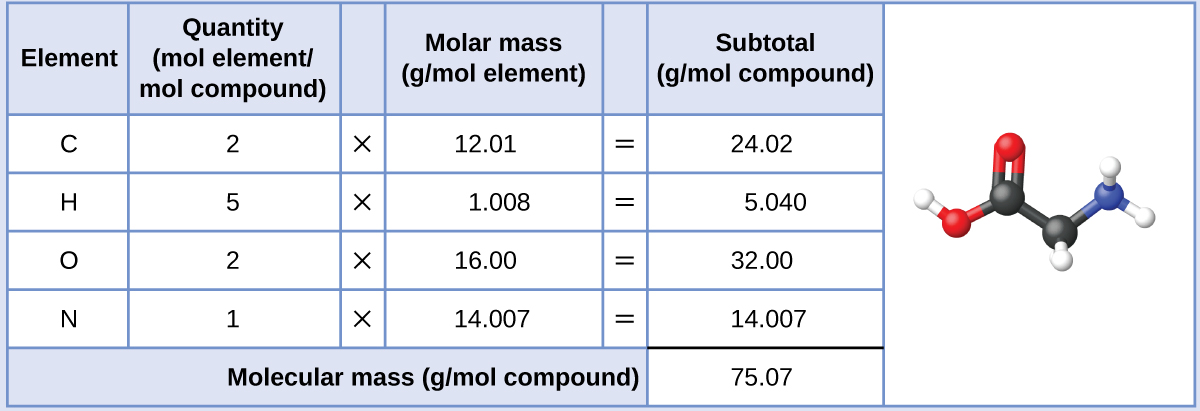- Molar Mass Of Fluorine Gas F2
- Molar Mass Of Fluorine F2
- Molar Mass Of Fluorine Gas
- Mass Of Fluorine In Kg
››More information on molar mass and molecular weight. In chemistry, the formula weight is a quantity computed by multiplying the atomic weight (in atomic mass units) of each element in a chemical formula by the number of atoms of that element present in the formula, then adding all of these products together. Fluorine is the thirteenth most common element in Earth's crust at 600–700 ppm (parts per million) by mass. Though believe to not occur naturally, elemental fluorine has been shown to be present as an occlusion in antozonite, a variant of fluorite. Most fluorine exists as fluoride-containing minerals. Having a chemical formula of F−, fluoride ion is the simplest inorganic, monatomic anion of fluorine with basic properties. It is considered a trace element. Fluoride ions are found in various minerals but are only present in trace amounts in water. The molar nuclear mass of fluorine-19 is 18.99840 g/mol. The molar mass of a proton is 1.007825 g/mol. The molar mass of a neutron is 1.008665 g/mol. Calculate the binding energy (in J/mol) of F-19. (c=2.998 x 10^8 m/s).
Molar mass of F = 18.9984032 g/mol
Convert grams Fluorine to moles or moles Fluorine to grams
| Symbol | # of Atoms | Fluorine | F | 18.9984032 | 1 | 100.000% |
In chemistry, the formula weight is a quantity computed by multiplying the atomic weight (in atomic mass units) of each element in a chemical formula by the number of atoms of that element present in the formula, then adding all of these products together.
Using the chemical formula of the compound and the periodic table of elements, we can add up the atomic weights and calculate molecular weight of the substance.
The atomic weights used on this site come from NIST, the National Institute of Standards and Technology. We use the most common isotopes. This is how to calculate molar mass (average molecular weight), which is based on isotropically weighted averages. This is not the same as molecular mass, which is the mass of a single molecule of well-defined isotopes. For bulk stoichiometric calculations, we are usually determining molar mass, which may also be called standard atomic weight or average atomic mass.
Formula weights are especially useful in determining the relative weights of reagents and products in a chemical reaction. These relative weights computed from the chemical equation are sometimes called equation weights.

If the formula used in calculating molar mass is the molecular formula, the formula weight computed is the molecular weight. The percentage by weight of any atom or group of atoms in a compound can be computed by dividing the total weight of the atom (or group of atoms) in the formula by the formula weight and multiplying by 100.
Finding molar mass starts with units of grams per mole (g/mol). When calculating molecular weight of a chemical compound, it tells us how many grams are in one mole of that substance. The formula weight is simply the weight in atomic mass units of all the atoms in a given formula.
A common request on this site is to convert grams to moles. To complete this calculation, you have to know what substance you are trying to convert. The reason is that the molar mass of the substance affects the conversion. This site explains how to find molar mass.
Molar Mass Of Fluorine Gas F2
Molar mass of BF3 = 67.8062096 g/mol
Convert grams Boron Trifluoride to moles or moles Boron Trifluoride to grams
Molecular weight calculation:
10.811 + 18.9984032*3
| Symbol | # of Atoms | Boron | B | 10.811 | 1 | 15.944% | |
| Fluorine | F | 18.9984032 | 3 | 84.056% |

Molar Mass Of Fluorine F2
In chemistry, the formula weight is a quantity computed by multiplying the atomic weight (in atomic mass units) of each element in a chemical formula by the number of atoms of that element present in the formula, then adding all of these products together.
The atomic weights used on this site come from NIST, the National Institute of Standards and Technology. We use the most common isotopes. This is how to calculate molar mass (average molecular weight), which is based on isotropically weighted averages. This is not the same as molecular mass, which is the mass of a single molecule of well-defined isotopes. For bulk stoichiometric calculations, we are usually determining molar mass, which may also be called standard atomic weight or average atomic mass.
Formula weights are especially useful in determining the relative weights of reagents and products in a chemical reaction. These relative weights computed from the chemical equation are sometimes called equation weights.
Using the chemical formula of the compound and the periodic table of elements, we can add up the atomic weights and calculate molecular weight of the substance.
Molar Mass Of Fluorine Gas

Finding molar mass starts with units of grams per mole (g/mol). When calculating molecular weight of a chemical compound, it tells us how many grams are in one mole of that substance. The formula weight is simply the weight in atomic mass units of all the atoms in a given formula.
If the formula used in calculating molar mass is the molecular formula, the formula weight computed is the molecular weight. The percentage by weight of any atom or group of atoms in a compound can be computed by dividing the total weight of the atom (or group of atoms) in the formula by the formula weight and multiplying by 100.
Mass Of Fluorine In Kg
A common request on this site is to convert grams to moles. To complete this calculation, you have to know what substance you are trying to convert. The reason is that the molar mass of the substance affects the conversion. This site explains how to find molar mass.

Comments are closed.